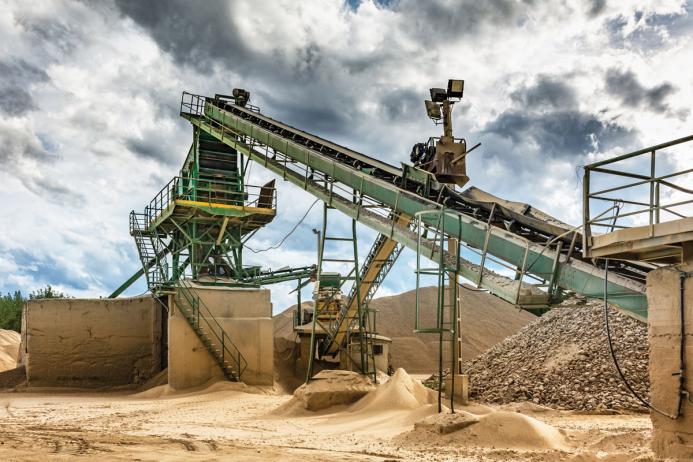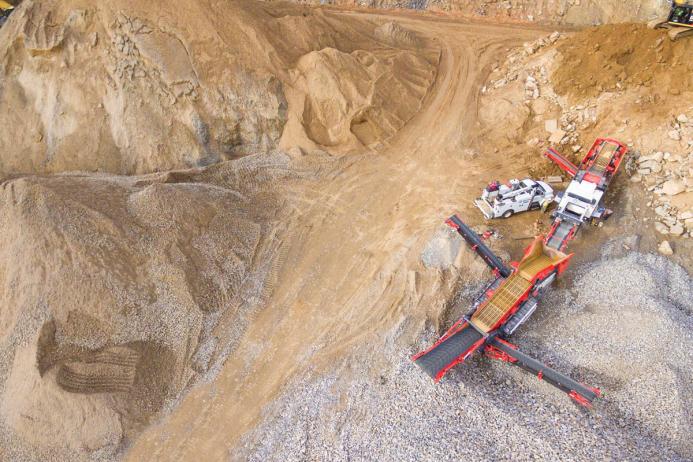Permitted Development in Mineral Sites

First published in the June 2023 issue of Quarry Management as Understanding the Basics
Permitted development in mineral sites in England
By Lynn Alderman, consultant, MPG
All developments are subject to planning regulations and restrictions – even those that do not require planning permission. But how much do you know about Permitted Development Rights, and do you understand the basics? This article delves a little deeper into explaining what this means for mineral operators and their sites, particularly in relation to plant and equipment.
The extraction of minerals is an important industry in England, contributing significantly to the country’s economy. Minerals planning ensures that the need for minerals by society and the economy, as well as the impacts of extraction and processing on people and the environment, are managed in an integrated way. One aspect of this management is to understand the rules surrounding permitted development rights.
Permitted Development Rights (PDRs) are an important feature of the UK’s planning system. They are a national grant of deemed planning permission which allows certain works to take place without the need to make a planning application. Most Rights are subject to conditions and limitations to control impacts and to protect local amenity.
The Government recognizes that the planning system should, where possible, facilitate appropriate development without compromising on environmental standards. It believes that the regulatory safeguards that are in place for mineral exploration provide a balanced approach between lightening the burden (regulatory and financial) on businesses and individuals, whilst also protecting the environment, amenity and public safety.
In terms of mineral sites, Permitted Development is governed by Part 17: Mining and Mineral Exploration of the Town and Country Planning (General Permitted Development) (England) Order 2015 (as amended) (GPDO). Similar provisions exist for Scotland, Wales and Northern Ireland. It includes detailed restrictions, conditions and interpretation.
Permitted Development for mineral sites is defined in the GPDO as: ‘The carrying out of operations for the erection, extension, installation, rearrangement, replacement, repair or other alteration of any (a) Plant or machinery, (b) Buildings, (c) Private ways or private railways or sidings, or (d) Sewers, mains, pipes, cables or other similar apparatus, on land used as a mine’.
Under the GPDO, there are several types of development that can be considered ‘permitted’ in mineral sites. These include the construction of buildings and structures necessary for mineral extraction, and the storage and disposal of mineral waste. Nevertheless, it is important to note that not all development within mineral sites can be deemed permitted.
There will be some types of development which will require planning permission to be obtained.

The extraction and processing of minerals often require the use of specialized plant and equipment to facilitate effective and efficient operations. The GPDO allows for the installation of plant, machinery, or equipment necessary for the purposes of mineral extraction, processing, storage, or distribution (subject to certain limitations and conditions).
Any equipment should be designed and sited in a manner that minimizes its impact on the environment and surrounding communities. For example, small-scale equipment, used for crushing or screening minerals, may be allowed without planning permission. Larger-scale equipment or machinery, which could create a visual impact or generate emissions, may require planning permission.
PDRs also allow for the modification and upgrading of existing machinery, enabling operators to enhance productivity and efficiency within their mineral operations and extend to the use of temporary plant and equipment, including mobile units and portable facilities, which may be required for specific operations or during initial site development. The Rights can also cover the installation of ancillary infrastructure, such as electricity supply lines, water pipes, and access roads, necessary for the operation of plant and equipment within a mineral site.
The type of plant that can be installed in a quarry without the need for planning permission will depend on several factors, such as the location of the site, the purpose of the operation and any potential impacts on the environment and surrounding communities.
Whilst Permitted Development Rights provide flexibility, there are a number of restrictions and certain limitations that mineral operators must adhere to when installing, modifying and using plant and equipment. Below are some important considerations when assessing your proposal under PD Rights:
Environmental Impact: Operators must carefully assess and mitigate the potential environmental impact of their plant and equipment, including noise, dust, vibration, and the protection of habitats and species.
Height and scale: There are limitations on the height and scale of plant and equipment installations to minimize visual impact on the surrounding landscape and residential areas.
Site location: The Rights may be subject to restrictions based on the site’s location, proximity to sensitive areas, and designated conservation sites.
Consultation and notification: In certain cases, operators are required to consult with local authorities and notify them about the installation, modification, or use of specific plant and equipment.
Restoration: Operators are responsible for the site once mineral extraction operations are complete, ensuring that any residual impacts from plant and equipment are mitigated.
Local authorities play a crucial role in monitoring compliance with the conditions of Permitted Development Rights, ensuring that any adverse effects are minimized and mitigated.
A planning authority has the power to make a Direction to remove all, or some, specified PDRs within a certain area. This is known as an Article 4 Direction. An Article 4 direction does not prohibit development but enables the planning authority to have control over the proposed development. The result of an Article 4 Direction is that a planning application would need to be submitted for the desired works or activity.
The overall aim of providing PDRs is flexibility and a streamlining of the UK planning system. However, there are many restrictions and limitations that must be adhered to before going ahead with any works or activity.
Whilst these rules are designed to ensure that mineral extraction is carried out in a manner that minimizes the impact on the environment and nearby communities, it is important to note that not all development in mineral sites is permitted development.
Operators should carefully review the relevant regulations and seek professional advice from an experienced mineral planning consultant where necessary, to ensure compliance with planning laws and regulations. If in doubt, MPG can advise on Permitted Development Rights. Contact: headoffice@mpgyorks.co.uk
About the author
Lynn Alderman joined the minerals and waste industry in 2001 and brings a wealth of knowledge to the MPG team with more than 11 years’ experience as a senior planning consultant. She currently supports the team with the preparation of supporting statements, as well as planning and permit applications.
Subscribe to Quarry Management, the monthly journal for the mineral products industry, to read articles before they appear on Agg-Net.com


